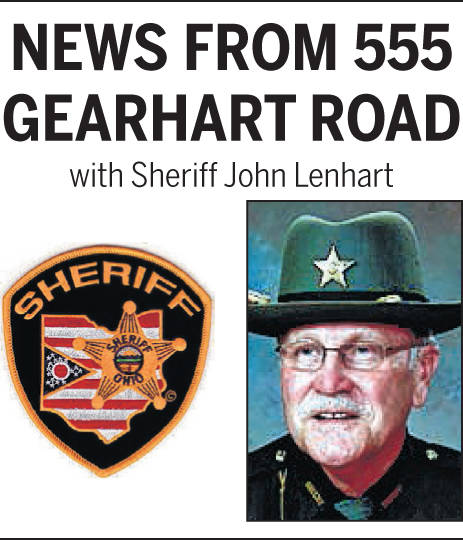
SIDNEY — It’s time for spring cleaning both inside the house and outside. But do you know the rules governing what can and cannot be burned as you’re cleaning up your yard or field?
“In 2018, the Sheriff’s Office responded to 389 controlled burns,” said Lt. Tim Bender, who was substituting for Sheriff John Lenhart for this week’s column.
“We’re concerned about damage and injuries from the controlled burns,” said Bender.
The Sheriff’s Office, along with other law enforcement agencies in the county, follow the regulations established by the Ohio EPA and the Ohio Department of Natural Resources Forestry division in regards to controlled burns and open burning.
“A barn caught on fire because of a controlled burn in the county,” said Bender. “There have also been injuries when the fire flashed up because the person was using an accelerant. The person suffered severe burns and internal injuries because they inhaled the fire.”
According to the Ohio EPA, open burning is never allowed if:
• Air pollution warnings, alerts or emergencies are in effect.
• The fire obscures visibility for roadways, railroad tracks or air fields.
• The waste generated for the fire if generated off premises. For example, a tree trimming contractor cannot haul branches and limbs to another site to burn.
Items which cannot be burned under the open burning rules includes:
• Garbage, which includes any waste created in the process of handling, preparing, cooking or consuming food.
• Materials containing rubber, grease and asphalt or made from petroleum such as tires, cars, auto parts, plastics or plastic-coated wire.
• Dead animals unless approved for control of disease by a governing agency.
“A recreational fire is allowed in both the country and within city limits,” said Bender. “But you should only burn clean, dry seasoned wood in the fire. You may not burn trash. The fire pit should be no larger than 3 foot in diameter and the flames cannot go up more than 2 feet.
“You should also keep your neighbors in mind if you have a recreational fire, especially if the person has respiratory problems,” he said. “Be aware of the direction of the wind, because that’s the direction the smoke is going to travel too.”
There are different guidelines for open burning if the person lives outside a city or village. If the person lives within 1,000 feet of a municipality or village that has 1,000 to 10,000 residents, open burning is not permitted.
“These rules don’t count for a recreational fire,” said Bender. “Within corporation limits, there no open burning allowed at all except for recreational burning.”
Residents planning to have a controlled burn on their property should contact the sheriff’s office prior to the fire being started. They can call the office — 937-498-1111 — to give the deputies their name, telephone number and the address of where the controlled burn is going to happen.
“This doesn’t give you permission to burn,” said Bender. “But it does give us the information we need in case other people call in concerned a house or barn is on fire. You should call your local fire department to make sure the the open burn is permitted.”
Tips for preparing for a controlled or open burn include:
• Pay attention to the weather conditions. Is it too dry to start a fire for fear it will spread?
• Pay attention to the direction of the wind as that’s where the fire and smoke are going to travel/
• If you’re burning something and the grass is dry, watch out for flying sparks.
• Use your common sense when determining whether to start a fire or not.
The National Weather Service, said Bender, call activate a “Red Flag Warning.” This alert warns firefighters and land management agencies that conditions are ideal for wild land fire combustion and rapid spread. When this alert is given, no one can have an open burn or controlled burn.
Other reasons the warning might be issued deals with low humidity, erratic winds and lightning, said Bender.
“A controlled burn should be attended to at all times,” said Bender. “If it’s close to your house or other buildings, have a water source (hose) nearby if needed.
“If the fire gets out of control, don’t try to fight it yourself. Call 911 and get the fire department there to put the fire out,” he said.


